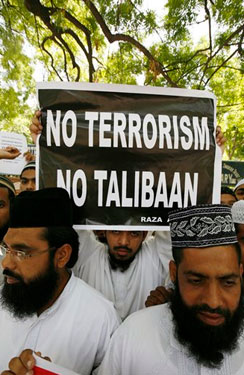
In New York this past September, the Global Counter-Terrorism Forum (GCTF)—an informal intergovernmental body made up of 29 like-minded states and the EU, co-chaired by the United States and Turkey and focused on the delivery of capacity-building assistance—announced their intention to create a global fund to support local, grass-roots efforts to counter violent extremism. This is a departure from traditional funding sources, which to date have stemmed mainly from governments that have a natural preference towards larger multi-year projects thus simplifying the initial investment costs and project administration.
The Global Fund on Community Engagement and Resilience will provide support that is better able to reach the community level where countering violent extremism (CVE) projects will have the most buy-in and impact, and have more flexible, smaller disbursements. In addition, the fund is the first ever initiative to allow for public-private partnerships in CVE in its many manifestations, which can vary significantly across different regions.
All of this sounds very different from traditional counterterrorism which has historically been more associated with law enforcement and military initiatives with a focus on putting “boots on the ground” than development or conflict resolution efforts. While there is value in enhancing operational capacities of governments to pursue terrorist groups and bring them to justice, the evolving nature of contemporary terrorism has prompted greater focus on preventive approaches. The traditional terrorist organization with members requiring specialized knowledge and training has, to a large extent, been replaced by networks of ideologues, supporters, and operatives spanning several political boundaries and using faster travel and communications technologies to move ideas and materiel. In short, they’ve globalized. The Internet has even made it possible for individuals to be inspired, and then plan and carry out an attack without any formalized contact with known terrorist groups or extensive training.
Consequently, policymakers and practitioners have placed increasing emphasis on countering violent extremist ideas and narratives that underpin support and recruitment. This preventive approach has focused on addressing what the UN Global Counterterrorism Strategy calls the “conditions conducive to the spread of terrorism,” which include “prolonged unresolved conflicts, dehumanization of victims of terrorism in all its forms and manifestations, lack of rule of law and violations of human rights, ethnic, national and religious discrimination, political exclusion, socio-economic marginalization, and lack of good governance.” Following on this, there has increased engagement with practitioners and policymakers focusing on development, conflict prevention and resolution, peacebuilding, education, arts, and culture.
However, there continues to be reluctance among a number of development and other practitioners about engaging in work designated as “counterterrorism.” This reflects concerns about the safety of field personnel and the securitization of assistance; the political sensitivities about the designation of, and engagement with, terrorist groups; and bureaucratic inertia in many governments—as well as international organizations like the UN—which impede collaboration.
Nonetheless, as security challenges grow more complex and acts of terrorism or violent extremist groups are more integrated with broader conflict dynamics, it becomes more difficult in many instances to draw clean lines between conflict prevention, countering violent extremism, and enhancing the rule of law. Violent extremism need not only be associated with acts of terrorism; it can fuel sectarian tensions, incite inter-communal violence, prompt transnational attacks, and foster intolerance. Extremist groups destroying schools, attacking health workers, and constraining economic opportunities create an inhospitable environment for development. This need not be a zero-sum game between policy domains; in fact, as violent extremism can be a driver of conflict and instability, a CVE approach that integrates lessons learned and good practices drawn from the fields of development, education, and peacebuilding, for example, is likely to gain more traction in the field. There is in fact widespread recognition among policymakers and practitioners that CVE works best when it is responsive to local, national, and regional needs, aligned with development priorities and empowers local partners to take ownership and shape the outcomes.
In some instances, CVE projects may need to be initiated from scratch, but it is not always necessary to reinvent the wheel. A modest grant may support adding a “CVE-relevant dimension” to existing efforts, or increasing awareness and understanding of CVE challenges among communities and frontline practitioners. Evaluating CVE efforts is challenging; in many instances, it is difficult to draw a causal connection between input and output, or lack thereof, leaving practitioners to “measure the negative” when a terrorist attack is successfully prevented.
Still, much progress has been made in drawing on related policy domains to develop means of evaluating impact (though there’s room for lots more). For all these reasons, a global fund has the potential to offer valuable opportunities for local actors to shape CVE engagement, seek support for the kinds of programs that are contextually suitable, and access a wider variety of potential donors and supporters. It could offer a more broadly applicable framework for evaluating CVE engagement and an opportunity to support and enhance more organic initiatives. Violent extremist groups have thrived from creating a transnational master narrative, but they draw on local experiences and grievances to drum up support. To reduce the appeal of groups that resort to political violence and constrain their activities, CVE policy and practice must move in the same direction.
Naureen Chowdhury Fink is the Head of Research and Analysis at the Center on Global Counterterrorism Cooperation (CGCC). Her latest publication is Evaluating Countering Violent Extremism Programming: Practice and Progress (with Peter Romaniuk and Rafia Barakat).




